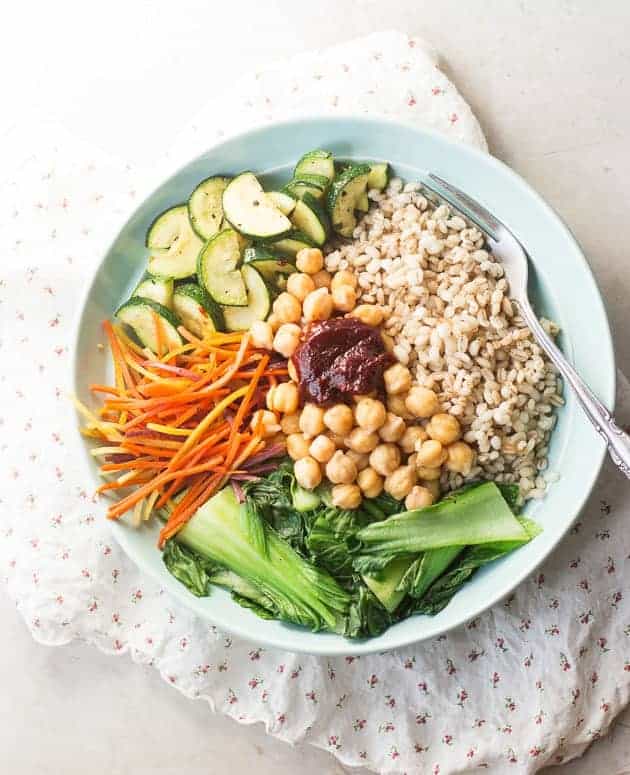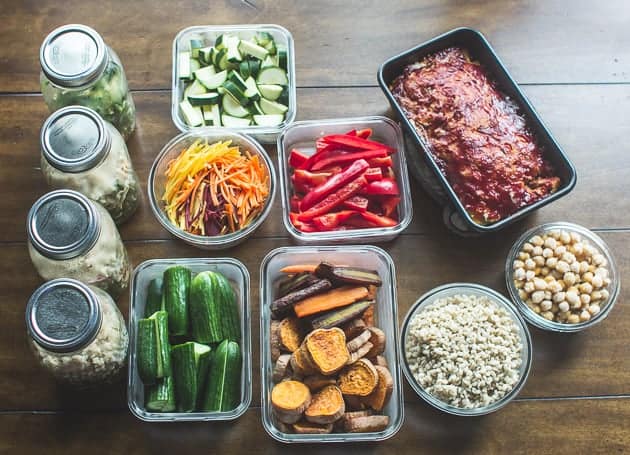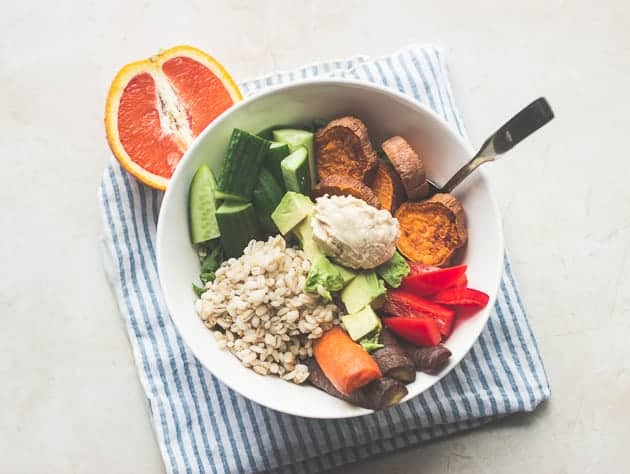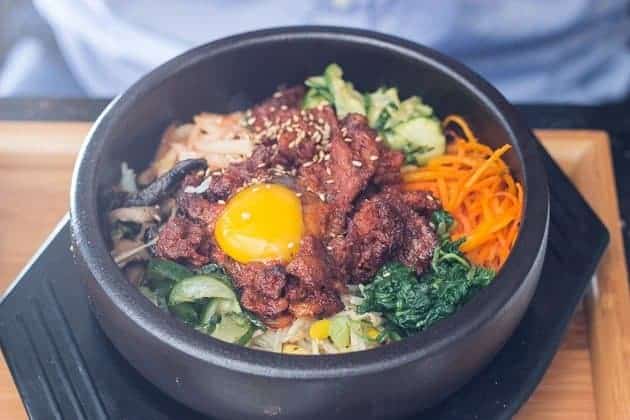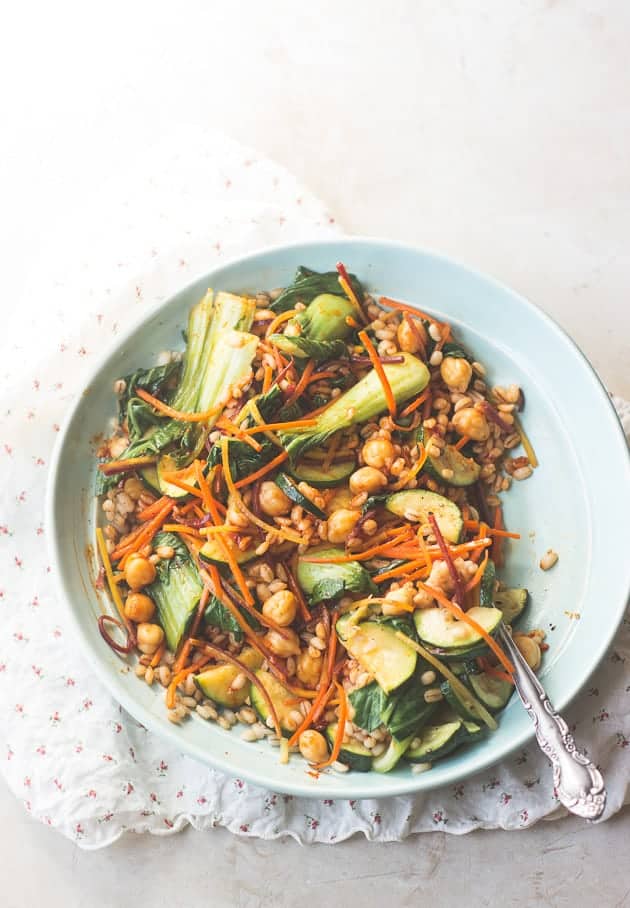A big bowl of nothing but wholesome, REAL foods with all the essential food groups is what this “nourish bowl” is all about! It is so true that we eat with our eyes first. I mean seriously, doesn’t this bowl just scream “EAT ME!”? I eat a bowl like this every week if not every day, and so can you! Building a nourish bowl is super simple – ditch the recipe and follow your heart (and stomach). There is one rule, however, and that is to make sure the bowl contains a well-balanced combination of carbohydrates, protein, and fat (in case you missed it, I wrote a whole post on how essential fats are in our diet and why you shouldn’t label them as “good” or “bad”). Seeing these healthy one bowl meals popping up all over the blogosphere has me super excited. Hence, I created a board and named it Nourish/Power Bowls. I’m thinking about turning this into a group board so if you’re interested in contributing, let me know! I’ll be sure to send you an invite ;).
There is a little bit of prep work involved, however, due to the fact that the majority of the toppings should come from the earth, not from boxes. I guess that’s another rule. I lied. Make that two rules to making a proper nourish bowl! I mean, come on… You have to put in some effort, right? The spread you see above is an example of my typical weekend meal prep. You may be thinking, “Where are the meals? I’m not a rabbit. I don’t want to be chomping on vegetables all day!” Enter nourish bowls…
It may not be so exciting to eat just red bell peppers, cucumbers, etc., but throw them all together in a bowl with some hearty whole grains, creamy avocado, and hummus? Voila! You’ve got yourself a textually-appealing and flavorful meal that will nourish you from inside out. Today’s nourish bowl is a twist on a traditional, iconic Korean dish – Bibimbap. Because Korean meals typically consist of rice and an assortment of side dishes (“banchan”), come the end of the week, you can count on some variation of Bibimbap gracing the dinner table. It’s the most delicious way to clean out the fridge. Thus, I consider bibimbap a model leftover, no-frills meal. But, of course, if you order it at a restaurant, it looks like a work of art. Personally, I prefer eating it at home as it just tastes more…comforting. // From Miso, a Korean restaurant in our neighborhood I will admit – This vegan Korean nourish bowl does take a bit longer to compose than my typical bowls. That’s because all the vegetables have to be cooked separately, just like you would with “japchae” (Korean stir-fried sweet potato noodles). However, if you prep all the veggies in advance, all you really have to do is make the sauce and mix mix mix. If you are Korean and looking at this picture, you’re probably shaking your head in complete dismay and asking, “Where is the yolky egg on top?” Yes, yes. I substituted it with chickpeas to make a vegan version this time. Who am I kidding? I just had tons of chickpeas on hand. However, feel free to add whatever ingredients you’d like or have on hand. As I often say, let this “recipe” serve as a guide. [Tweet “Vegan Korean Nourish Bowl with Barley {Bibimbap} @mjandhungryman #eatclean #nourish #vegan “]
Gochujang, fermented red chili paste, is a quintessential ingredient in Korean cooking. I forgot to include it in the picture, but I highly recommend adding some kimchi. Together, not only do they make this dish taste even more Ah-MAI-ZING, but they bump up its nutrient profile as well – Fermented foods are excellent sources of probiotics, the “beneficial” bacteria that aid in digestion, improve bowel health, boost immunity, enhance the absorption of nutrients in the foods consumed, and much more. Again, you have the freedom to swap out the ingredients as you wish. Don’t like bok choy? No problem! Replace it with something else, like spinach.
